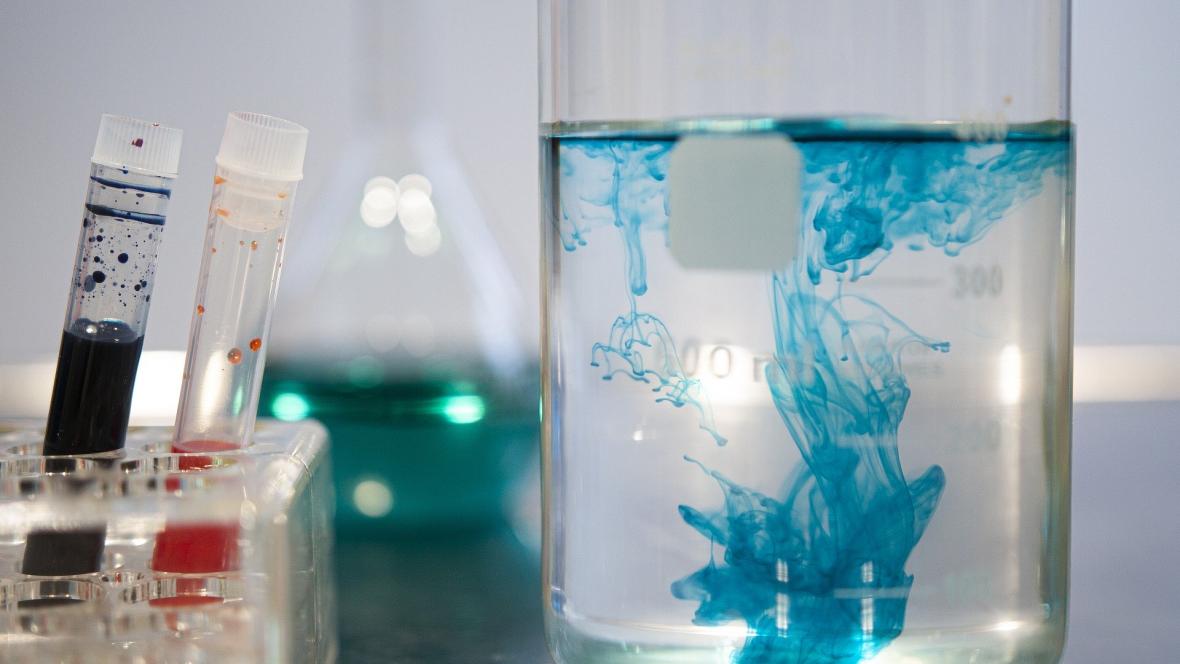Monitoring of the OLD-HEPAMARKER Research program

A few years ago, older patients with liver tumours were treated more conservatively than younger patients, as it was considered that there was more risk of complications due to their fragility and the frequent co-existence of other diseases and medication for them. Because they received milder anti-tumour treatments, older patients had a weaker response to chemotherapy and their survival was shorter.
It is now accepted that the overall strategy for the treatment of older liver cancer patients should not be different from that of younger patients, as numerous studies have confirmed the safety and efficacy of different therapeutic approaches (surgery, liver transplantation, radiofrequency or microwave ablation, and drug therapies), provided that patients with a good general condition are selected and adequately followed.
The number of patients over 70-75 years of age diagnosed with hepatocarcinoma or cholangiocarcinoma is increasing, and with the ageing of the population the number of elderly patients with liver cancer is expected to continue to increase in the coming years. A significant percentage of them will be diagnosed when the tumours are in advanced stages of development, and will therefore have to receive pharmacological treatments (Figure 1), which at the moment are all palliative, as there is no cure.
International clinical guidelines define which treatments should be administered in the first and second line to patients with each type of liver cancer. Unfortunately, in a high percentage of these patients, the treatment is not going to be effective and we know a priori that even in those who initially manage to stop the progression of the cancer, after a while they will stop responding to chemotherapy and the tumour growth will re-emerge, sometimes with greater aggressiveness and chemoresistance.
Figure 1. Nowadays, choosing the right drug treatment requires a good degree of luck.
The cells that form tumours have particular characteristics that can affect the response to different treatments. The analysis of the molecular profile may allow the identification of markers or mutations that help to select the most appropriate treatment. The future of cancer treatment is increasingly focused on the search for personalized medicine based, for example, on new vectorized therapies or immunotherapy, which takes into account the specific characteristics of each tumor and which adapts to the particularities of patients, including age-related changes.
The "OLD-HEPAMARKER" project also seeks to identify markers that allow the most appropriate anti-tumour drug treatment to be chosen for each patient. To do this, on the one hand, it is necessary to know the changes that occur in the body in older people that can affect the effectiveness of anti-tumour drugs and/or produce adverse effects and, on the other hand, it is necessary to identify the mechanisms that tumour cells develop to defend themselves against chemotherapy.
Chemoresistance is when cancer cells do not respond to treatment with anti-tumour drugs (Figure 2). In the case of liver tumours this is considered a serious problem, as some drugs which are effective in the treatment of other types of tumour have little effect on hepatocarcinoma and cholangiocarcinoma, as both are characterised by their high chemoresistance.
Figure 2. Liver cancer cells are highly resistant to treatment with anti-tumour drugs.
Chemoresistance may be primary or intrinsic, when it is already present in the tumour before the administration of treatment, or it may develop during the administration of chemotherapy, and then we speak of secondary or acquired resistance. In addition, it is common that the mechanisms that tumour cells develop to defend themselves against a certain drug can be effective against other types of drugs, which is known as cross-resistance.
Among the mechanisms of chemoresistance, which we call MOCs, we in the HEVEFARM group are especially interested in investigating those that reduce the amount of active drug inside the tumor cells.
Most of the drugs administered to treat cancer are not able to pass freely through the tumor cell membrane, but require proteins that serve as gateways to reach the interior of the cell, where the targets are located and which they must bind to in order to induce cell death.
One of the mechanisms that tumour cells use to defend themselves against chemotherapy consists of reducing the number of available entry doors or making them unusable (Figure 3). This situation is complemented by the existence of systems for expelling substances that are harmful to the cells and that in tumours can function at maximum capacity to increase the expulsion of anti-tumour drugs. Both mechanisms reduce the amount of drug inside the cancer cells and therefore limit their anti-tumour effect.
.
Figure 3. Representation of two mechanisms that a tumour cell can use to avoid the anti-tumour effect: reducing the input of drugs and/or increasing their output.
One of the objectives of our research is to find out the transport proteins capable of allowing the entry of each drug into the cells and those responsible for its expulsion, which would make it possible to develop strategies to measure the capacity of these chemoresistance mechanisms to function in tumours from biopsy samples obtained during diagnosis or during surgery. This information may be key to assessing whether a drug has little chance of being effective in a tumor.
Overall, there are more than 100 genes directly related to seven different groups of chemoresistance mechanisms. Therefore, to define the genetic fingerprint of chemoresistance we have designed cards called TLDAs (Taqman Low Density Arrays) that allow us to quickly analyze the expression of all these genes in each tumor and predict the lack of response of certain drugs (Figure 4). By analyzing a large number of samples from older and younger patients we hope to validate the use of this tool and compare results in younger and older liver cancer patient populations.
Figure 4. Use of TLDAs in the analysis of the genetic fingerprint of chemoresistance in liver tumors.
References
- Al-Abdulla R et al. Epigenetic events involved in organic cation transporter 1-dependent impaired response of hepatocellular carcinoma to sorafenib. Br J Pharmacol. 2019; 176: 787-800.
- Banales JM et al. Expert consensus document: Cholangiocarcinoma: current knowledge and future perspectives consensus statement from the European Network for the Study of Cholangiocarcinoma (ENS-CCA). Nat Rev Gastroenterol Hepatol. 2016; 13: 261-80.
- Banales JM et al. Cholangiocarcinoma: State of the art knowledge and challenges. Liver International 39, 5-6.
- Briz O et al. Usefulness of liposomes loaded with cytostatic bile acid derivatives to circumvent chemotherapy resistance of enterohepatic tumors. Mol Pharmacol. 2003; 63: 742-750.
- Briz O et al. Overcoming cisplatin resistance in vitro by a free and liposome-encapsulated bile acid derivative: BAMET-R2. Int J Cancer. 2000; 88: 287-292.
- Geier A et al. The lack of the organic cation transporter OCT1 at the plasma membrane of tumor cells precludes a positive response to sorafenib in patients with hepatocellular carcinoma. Oncotarget. 2017; 8: 15846-15857.
- Herraez E et al. Expression of SLC22A1 variants may affect the response of hepatocellular carcinoma and cholangiocarcinoma to sorafenib. Hepatology. 2013; 58: 1065-1073.
- Lozano E et al. Causes of hOCT1-Dependent Cholangiocarcinoma Resistance to Sorafenib and Sensitization by Tumor-Selective Gene Therapy. Hepatology. 2019; 70: 1246-1261.
- Lozano E et al. Genetic Heterogeneity of SLC22 Family of Transporters in Drug Disposition. J Pers Med. 2018; 8: E14
- Lozano E et al. Enhanced antitumour drug delivery to cholangiocarcinoma through the apical sodium-dependent bile acid transporter (ASBT). J Control Release. 2015; 216: 93-102.
- Macias RI. Cholangiocarcinoma: Biology, Clinical Management, and Pharmacological Perspectives. ISRN Hepatol. 2014; 2014: 828074.
- Macias RI et al. The search for novel diagnostic and prognostic biomarkers in cholangiocarcinoma. Biochim Biophys Acta. 2018; 1864: 1468-1477.
- Macias RI et al. Diagnostic and prognostic biomarkers in cholangiocarcinoma. Liver Int. 2019; 39: 108-122.
- Marin JJG et al. Plasma membrane transporters as biomarkers and molecular targets in cholangiocarcinoma. Cells. 2020; 9: E498.
- Marin JJG et al. The role of reduced intracellular concentrations of active drugs in the lack of response anticancer chemotherapy. Acta Pharmacol Sin. 2014; 35: 1-10.
- Marin JJG et al. Molecular bases of chemoresistance in cholangiocarcinoma. Curr Drug Targets. 2017; 18: 889-900.
- Marin JJG et al. Molecular bases of the poor response of liver cancer to chemotherapy. Clin Res Hepatol Gastroenterol. 2018; 42: 182-192.
- Marin JJG et al. Chemoresistance and chemosensitization in cholangiocarcinoma. Biochim Biophys Acta Mol Basis Dis. 2018; 1864: 1444-1453.
- Marin JJG et al. Models for Understanding Resistance to Chemotherapy in Liver Cancer. Cancers (Basel). 2019; 11: E1677.
- Martinez-Becerra P et al. No correlation between the expression of FXR and genes involved in multidrug resistance phenotype of primary liver tumors. Mol Pharm. 2012; 9: 1693-1704.
- Monte MJ et al. Further evidence of the usefulness of bile acids as molecules for shuttling cytostatic drugs toward liver tumors. J Hepatol. 1999; 31: 521-528.
- Poon RT et al. Hepatocellular carcinoma in the elderly: results of surgical and nonsurgical management. Am J Gastroenterol. 1999; 94: 2460-2466.


